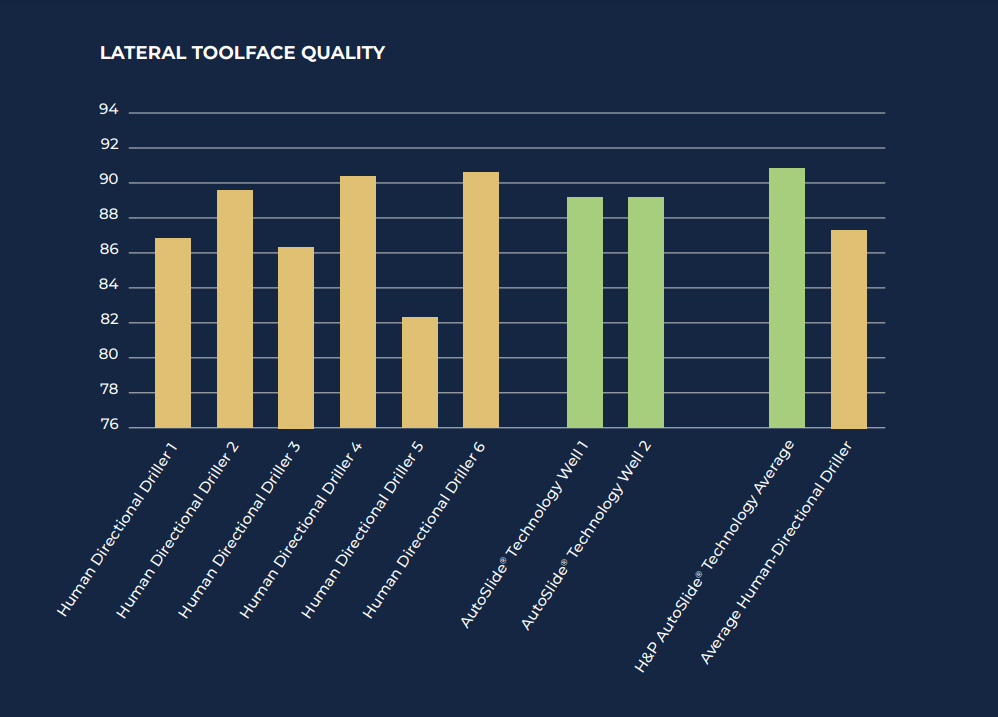Permian Operator Compares Experienced Human Directional Drillers and Automation Technology – and the Variables Held Constant
Challenge
Hunt Oil was drilling several wells in the Permian Basin with identical bit andmotor profiles and a lateral length between 10,300 and 10,700 feet, all within a 3-mile radius. Inconsistencies in toolface orientation and precision were causing long slide times and they were not reaching the maximum footage in their target geological zone. With so many variables for a driller to constantly consider and then react to in real-time – it was clear that technology was needed to empower the driller to be able to work more efficiently and without so much manual effort.
Solution
H&P recommended an integrated autonomous solution that would help make economic-driven decisions to reduce drilling time, reduce slide percentage, and deliver a smoother more accurate wellbore.
With H&P’s Bit Guidance System, the operator would be able to employ advanced computer algorithms to make steering decisions automatically, with more consistency, speed, and reliability than human directional drillers alone. This technology helps to remove variability around the directional driller’s decision making, reducing the chance for significant variations in performance. The intelligence from the Bit Guidance System is then automatically executed by AutoSlide® technology, an automated digital control module designed to continuously compensate for formation variability and for the effects of reactive torque.
Outcome
The operator compared the performance outcomes from wells drilled with the slide control module to similar wells drilled without it and found that on average, the wells with H&P technology realized a 14% decrease in the time it took to drill the lateral section – which equates to 16.4 hours per well. The primary reason for the reduction in drilling time was due to a reduction in the sliding percentage in the later section, an outcome created from more precise toolface control. With sliding rates of penetration (ROP) much lower than rotating ROPs, reductions in slide percentage not only led to a less tortuous well, but also directly lowered cost by reducing drilling time.
It is important to note that the only change in this well as compared to the control wells was adding AutoSlide technology.
Outcomes Achieved: Increased Reservoir Contact and Reduced Time to Target
· Lateral drill time decreased on average 16.4 hrs./well
· Slide footage was reduced on average 100 ft./well
· Slide time decreased 11.6 hrs./well
· Slide percentage by time decreased from 29% to 22.4%
· Slide percentage by footage decreased from 8.8% to 8.0%
· Toolface quality increased from 87.64% to 90.63%
By using advanced, integrated H&P technology, the operator realized a higher quality wellbore executed in a more efficient manner. Higher toolface precision reduced slide time and slide footage, ultimately producing a smoother wellbore than what can be done manually. Together, Hunt Oil and H&P realized increased reservoir contact and reduced time to target.

Past performance is not a guarantee of future results. Any statements regarding past performance are not guarantees of future performance and actual results may differ materially. © 10/2021 HPCS014


